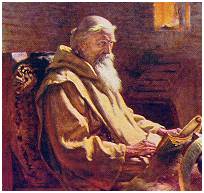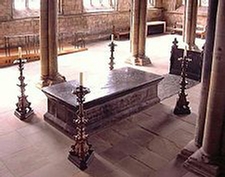



The Parish Church of St George the Martyr, Waterlooville

Whilst researching into the life and times of St Cuthbert, 7th Century Bishop of Lindisfarne, Rod entered Durham Cathedral to see his shrine. A few feet away, a similar imposing shrine was surrounded by visitors. Upon close examination, this one contained the remains of an individual who has been called ‘the Father of English History’ and Rod temporarily modified his investigation accordingly.
Engraved boldly on this latter shrine was the text:
Hic sunt in fosse bedae venerabilis ossa
(Here lie the bones of the Venerable Bede)
The Venerable Bede (otherwise called Saint Bede) was born in the year AD672 or 673. He entered a monastery at Monkwearmouth at the age of 7 and spent all his life in ecclesiastical surroundings. In 1899 he was made a Doctor of the Church by Pope Leo XIII. In this monastery and another one at Jarrow he had access to a superb library, opportunities rendered to him to spend much time in reading and writing on all manner of subjects. He died in AD735.
Bede is credited with the use (though perhaps he did not invent it) of the words Anno Domini -
The major work of the Venerable Bede is:
Historia Ecclesiastica Gentis Anglorum
(Ecclesiastical History of the English People)
which shed considerable light on the condition of the peoples at the time and before the 7th century. In addition this is the sole source of information about the monk and cowherd Caedmon -
Rod Dawson
Christmas Edition 2012
The Venerable Bede


Bede’s shrine at Durham Cathedral